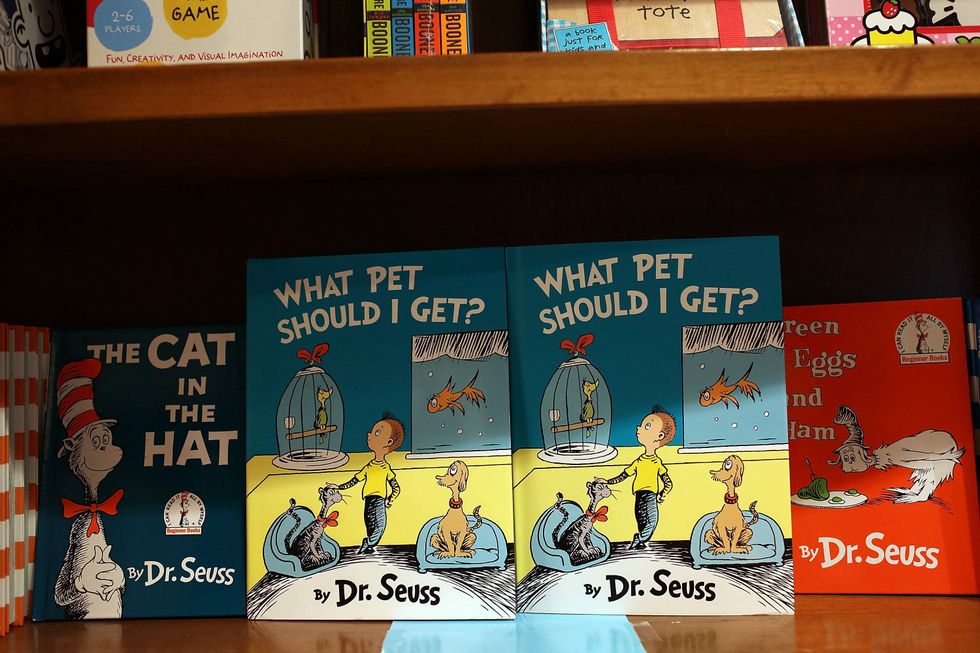
A Dr. Seuss museum in Massachusetts took down a mural after three authors protested an event because of it. (Joe Raedle/Getty Images)

Three authors refused to attend a book festival at a Massachusetts Dr. Seuss museum because of a mural they found racially offensive, leading the museum to remove the mural.
The mural in question pictured a character from Dr. Seuss's first book, "And To Think That I Saw It On Mulberry Street," originally referred to as the "Chinaman."
Here's a picture of the character from the book:
The book was originally published in 1937. Later editions published decades later altered the image in order to avoid offense (removing the yellow pigmentation and the hair, and referring to him as a "Chinese man" rather than a Chinaman).
The authors, Mike Curato, Mo Willems and Lisa Yee, sent a letter to the museum explaining their boycott of the event. You can read the full letter here. Some excerpts:
"We find this caricature of "the Chinaman" deeply hurtful, and have concerns about children's exposure to it.""While this image may have been considered amusing to some when it was published 80 years ago, it is obviously offensive in 2017 (the year the mural was painted)."
"...the administration replied that it was the responsibility of visitors to contextualize the oversized painting of the "Chinaman" for their younger wards, not theirs. It is hard to fathom this institution's contention that it has no obligation to the myriad of children (not to mention future authors and illustrators) who might be led to think that this form of racism is acceptable by featuring it in the main hall of their museum without comment."
The museum conceded to the authors' complaints and agreed to replace the mural with something else, saying in a statement "This is what Dr. Seuss would have wanted us to do:"
Theodor Seuss Geisel wrote under the pen name Dr. Seuss during his lifetime from 1904-1991. Dr. Seuss created an enormous body of work including children’s books and political cartoons. Dr. Seuss was a man of his times. He was also a man who evolved with his times. Dr. Seuss’s own story is a story of growth with some early works containing hurtful stereotypes to later works like The Sneetches and Horton Hears a Who! which contain lessons of tolerance and inclusion.It is in that spirit that Dr. Seuss Enterprises and the Springfield Museums listened to the concerns voiced by the authors and fans and have made the decision to take down the Mulberry street mural at the Amazing World of Dr. Seuss Museum and replace it with a new image that reflects the wonderful characters and messages from Dr. Seuss’s later works. This is what Dr. Seuss would have wanted us to do. Dr. Seuss would have loved to be a part of this dialogue for change. In fact, Ted Geisel himself said, “It’s not how you start that counts. It’s what you are at the finish.”
Despite the agreement between the authors and the museum, the Oct. 14 event was later canceled for unspecified reasons.
Dr. Seuss's work has been getting some tough publicity lately. Just last week, an elementary school librarian attacked First Lady Melania Trump and Education Secretary Betsy DeVos after Trump sent a package of Dr. Seuss books to the school.
The librarian alleged that the books were cliched and racist, despite photo evidence surfacing later that the teacher had previously dressed up as a Dr. Seuss character at a library.